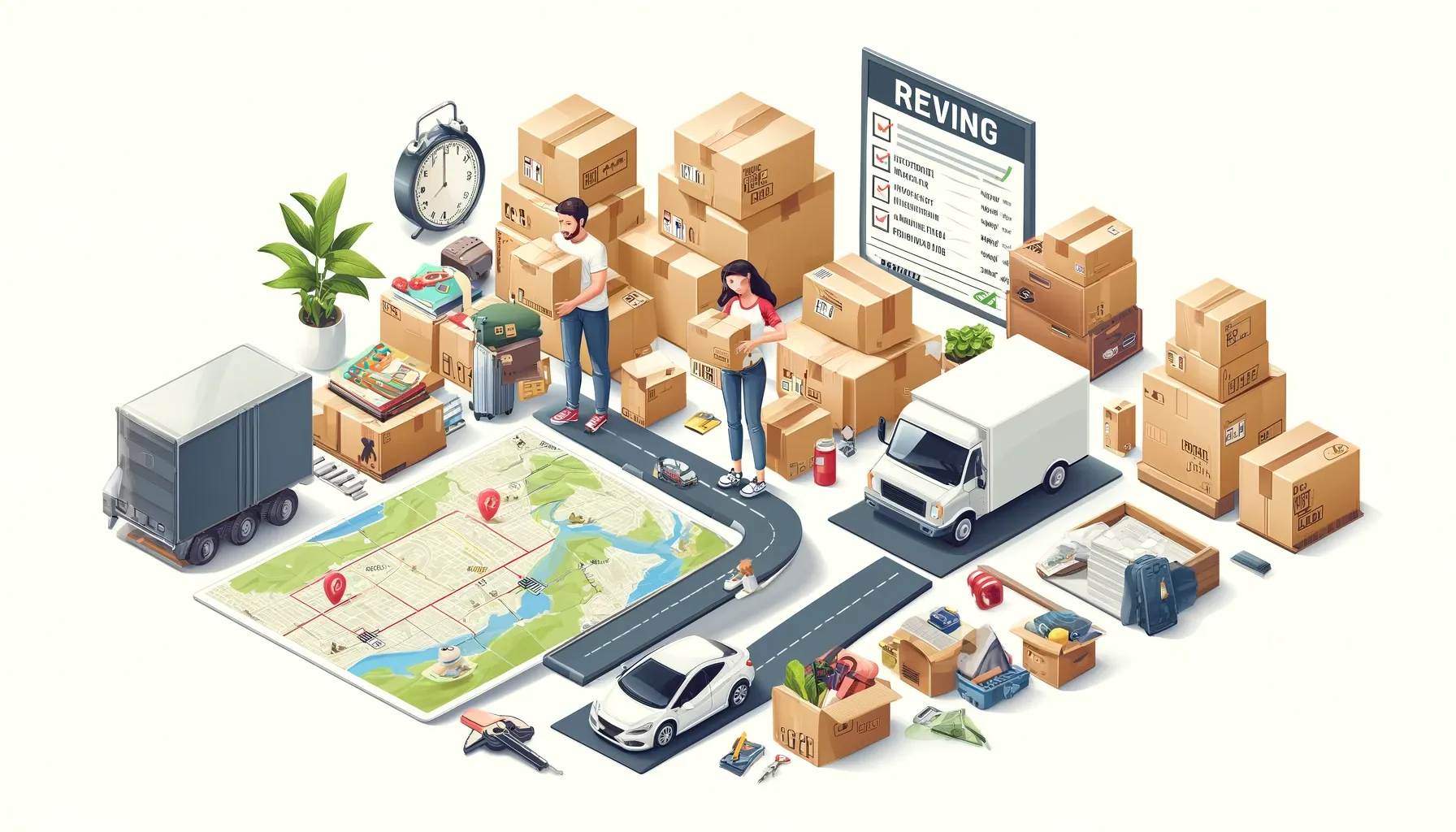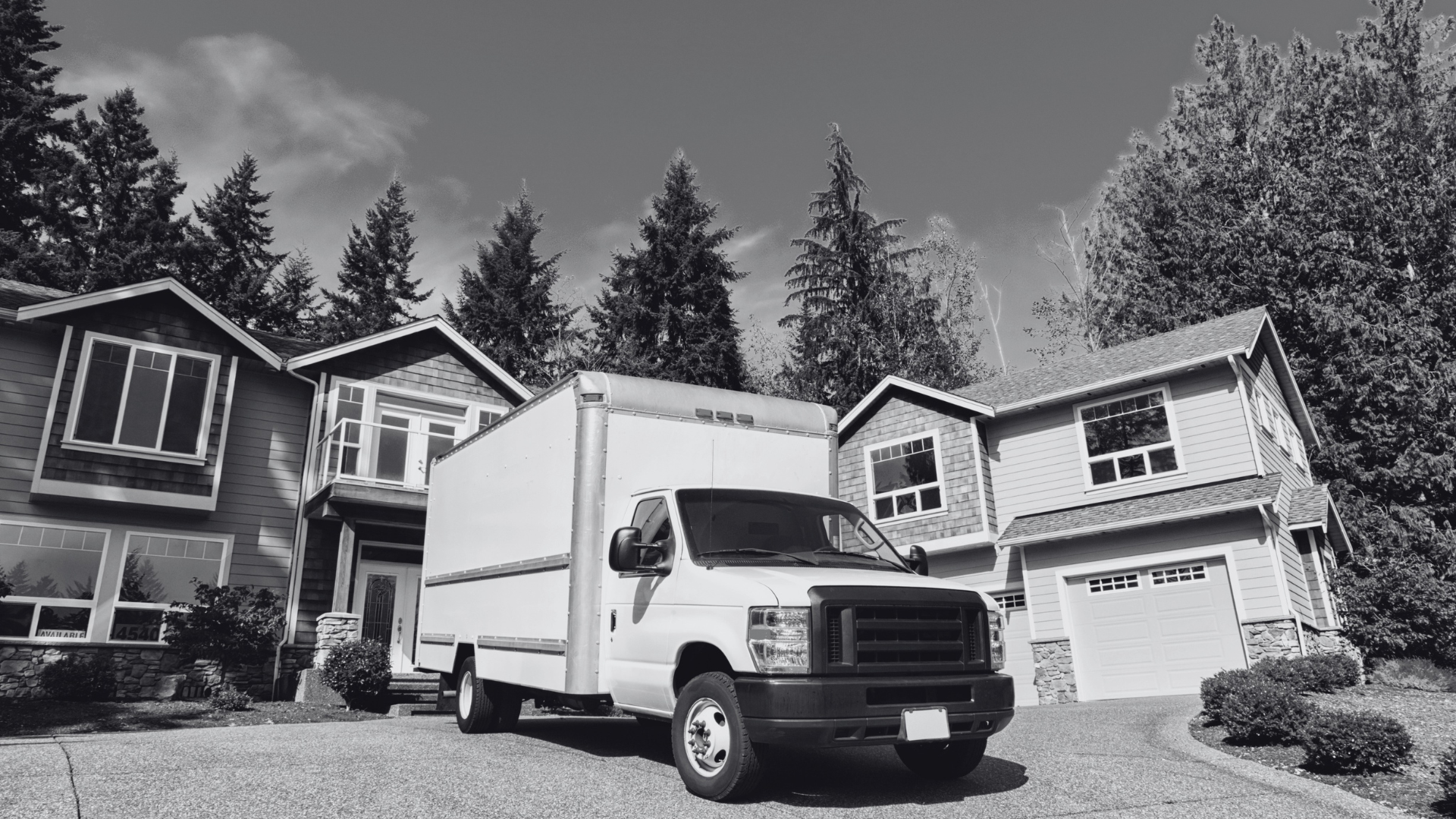How to Prepare for Your Long-Distance Move?
Are you gearing up for a long distance move? Whether you're relocating for a job, for family reasons, or simply for a change of scenery, preparing for a move can be overwhelming.


Introduction
Are you gearing up for a long distance move? Whether you're relocating for a job, for family reasons, or simply for a change of scenery, preparing for a move can be overwhelming. But fear not! In this article, we'll guide you through the process and help you make your long distance move as smooth as possible.
From packing tips to choosing the right moving company, we'll cover all the essential steps you need to take before embarking on your journey. We understand that moving can be stressful, and that's why we're here to provide you with expert advice and practical tips to ease the burden.
Our goal is to empower you with the knowledge and tools you need to plan, organize, and execute your long distance move with confidence. With careful planning and preparation, you can turn this daunting task into a seamless adventure. So get ready to say goodbye to the stress and hello to your new home!
The Importance of Preparing for a Long Distance Move
Moving to a new home, especially one that is far away, requires careful preparation. It's essential to plan ahead to ensure a smooth and stress-free transition. Here are a few reasons why preparing for a long distance move is crucial:
- Minimize Stress: Moving can be overwhelming, and the stress can take a toll on your physical and mental well-being. By preparing in advance, you can reduce the last-minute rush and alleviate some of the stress associated with moving.
- Save Time and Money: Proper planning allows you to efficiently allocate your time and resources. By creating a moving checklist and researching your options, you can save both time and money during the moving process.
- Ensure Safety and Protection: Long distance moves involve transporting your belongings over a significant distance. By adequately preparing and packing your items, you can ensure their safety and protection throughout the journey.
Creating a Moving Checklist
One of the most effective ways to stay organized during a long distance move is to create a comprehensive moving checklist. This checklist will serve as your roadmap, helping you keep track of all the tasks you need to complete before, during, and after the move. Here's how to create a moving checklist:
- Start Early: Begin creating your moving checklist at least a few months before your move. This will give you enough time to add all the necessary tasks and ensure that nothing is overlooked.
- Categorize Tasks: Break down your moving checklist into different categories such as packing, hiring movers, changing your address, etc. This will make it easier to manage and prioritize your tasks.
- Set Deadlines: Assign realistic deadlines to each task on your moving checklist. This will help you stay on track and ensure that you complete all the necessary tasks before your moving day.
- Stay Organized: Use a digital or physical planner to keep track of your moving checklist. You can also use apps or online tools specifically designed for moving organization.
Creating a moving checklist is an essential step in preparing for your long distance move. By following this checklist, you can stay organized and ensure that you don't miss any crucial tasks along the way.
Researching Moving Companies
Choosing the right moving company is crucial for a successful long distance move. Here are some tips to help you find a reliable and reputable moving company:
- Ask for Recommendations: Seek recommendations from friends, family, or colleagues who have recently moved long distance. They can provide valuable insights and recommend trustworthy moving companies.
- Do Online Research: Look for moving companies online and read customer reviews and ratings. Pay attention to any negative feedback or complaints, as this can be indicative of potential issues.
- Get Multiple Quotes: Contact at least three moving companies and request detailed quotes. Compare prices, services offered, and insurance coverage to make an informed decision.
- Check Licensing and Insurance: Ensure that the moving company you choose is licensed and insured. This will protect you in case of any damages or accidents during the move.
- Ask Questions: Don't hesitate to ask the moving company questions about their experience, equipment, and handling processes. A reputable moving company will be transparent and provide satisfactory answers.
By thoroughly researching moving companies and selecting the right one, you can have peace of mind knowing that your belongings will be in safe hands during your long distance move.
Packing and Labeling Your Belongings
Proper packing and labeling are essential to ensure the safety and organization of your belongings during a long distance move. Here are some tips to help you pack and label effectively:
- Start Early: Begin the packing process well in advance to avoid last-minute stress. Start with items that you don't use frequently and gradually work your way through the rest of your belongings.
- Declutter: Take this opportunity to declutter and get rid of items you no longer need or want. This will reduce the number of items you need to pack and save you time and effort.
- Use Quality Packing Supplies: Invest in sturdy boxes, bubble wrap, packing tape, and other packing materials. This will ensure that your belongings are well-protected during the move.
- Pack Room by Room: Pack items from each room separately and label the boxes accordingly. This will make unpacking and organizing your new home much easier.
- Label Boxes Clearly: Use a waterproof marker to label each box with its contents and the room it belongs to. This will help the movers know where to place each box and make unpacking more efficient.
- Pack Fragile Items with Care: Wrap fragile items individually in bubble wrap or packing paper. Use padding materials such as blankets or towels to fill any empty spaces in boxes and prevent movement.
By following these packing and labeling tips, you can ensure that your belongings arrive at your new home safely and that the unpacking process is organized and efficient.
Organizing Important Documents and Paperwork
During a long distance move, it's crucial to keep your important documents and paperwork organized and easily accessible. Here's how to ensure that your documents are well-protected throughout the move:
- Gather Important Documents: Collect all essential documents such as passports, driver's licenses, birth certificates, medical records, and financial records. Keep them in a secure folder or binder.
- Make Copies: Make photocopies or scan your important documents and store them digitally. This will serve as a backup in case any physical copies get lost or damaged during the move.
- Use a Fireproof and Waterproof Container: Place your important documents in a fireproof and waterproof container. This will provide an extra layer of protection in case of any accidents or disasters.
- Keep Documents with You: Instead of packing your important documents with the rest of your belongings, keep them with you during the move. This will ensure that they're easily accessible whenever needed.
By organizing and safeguarding your important documents, you can have peace of mind knowing that they're secure and readily available throughout your long distance move.
Notifying Utilities and Changing Your Address
Before you move to your new home, it's essential to notify your utility providers and change your address. Here's a checklist of utilities and entities you should inform about your move:
- Electricity and Gas: Contact your current utility providers to schedule the disconnection of services at your old address and the connection of services at your new address.
- Water and Sewer: Notify your water and sewer providers about your move to ensure a smooth transition of services. This will prevent any disruptions in your water supply.
- Internet and Cable: Inform your internet and cable providers about your move and schedule the installation of services at your new address. This will ensure that you have internet and entertainment as soon as you move in.
- Phone and Mobile Services: Contact your phone and mobile service providers to update your address and ensure uninterrupted service during and after the move.
- Postal Service: Visit the official website of your country's postal service to change your address and set up mail forwarding. This will ensure that you continue to receive your mail at your new address.
By notifying your utility providers and changing your address in advance, you can avoid any disruptions in essential services and ensure a smooth transition to your new home.
Making Travel Arrangements
If your long distance move involves traveling a significant distance, it's essential to make travel arrangements in advance. Here are a few things to consider when planning your travel:
- Book Flights or Train Tickets: If you're traveling by air or train, book your tickets well in advance to secure the best prices. Consider booking flexible tickets in case there are any unexpected changes or delays.
- Plan Your Route: If you're driving to your new home, plan your route in advance. Research the best roads, rest stops, and accommodations along the way. Consider downloading navigation apps for real-time updates.
- Arrange Accommodations: If your journey requires overnight stays, book accommodations in advance. Look for hotels or vacation rentals that offer convenient locations and amenities.
- Pack Travel Essentials: Pack a separate bag with essentials such as toiletries, a change of clothes, snacks, and any medications you may need during the journey. Keep this bag easily accessible.
- Prepare for Pet Travel: If you're moving with pets, make sure to research pet-friendly accommodations and plan for their comfort and safety during the journey. Consult with your veterinarian for any necessary vaccinations or medications.
You can ensure a smooth and comfortable journey to your new home by making travel arrangements ahead of time.
Streamline your instant booking quote with WeMove AI in minutes
Arranging for Storage if Needed
In some cases, you may need to arrange for storage solutions during your long distance move. Here are a few scenarios in which storage may be necessary:
- Downsizing: If you're moving to a smaller home and need to downsize, you may need temporary storage for excess belongings until you can decide what to do with them.
- Gap between Moves: If there is a gap between leaving your current home and moving into your new one, you may need to store your belongings temporarily.
- Renovations: If you're planning renovations in your new home and need to store furniture or other items during the construction period, renting a storage unit can be a convenient solution.
When arranging for storage, consider the following:
- Research Storage Facilities: Look for reputable storage facilities in your area. Read reviews and compare prices and services offered.
- Choose the Right Size: Determine the size of the storage unit you'll need based on the amount of belongings you plan to store. It's better to choose a slightly larger unit to accommodate any additional items.
- Insure Your Belongings: Check if the storage facility offers insurance coverage for your belongings. If not, consider purchasing a separate storage insurance policy to protect your items.
By arranging for storage if needed, you can ensure that your belongings are secure and well-maintained until you're ready to move them to your new home.
Streamline your instant booking quote with WeMove AI in minutes
Tips for a Smooth Transition to Your New Home
Once you've completed all the necessary preparations for your long distance move, it's time to focus on making the transition to your new home as smooth as possible. Here are some tips to help you settle in quickly:
- Unpack Essentials First: Start by unpacking the essentials such as bedding, toiletries, kitchen essentials, and clothing. This will ensure that you have the essentials for your daily needs.
- Take it Room by Room: Instead of trying to unpack everything at once, focus on one room at a time. This will help you stay organized and prevent feeling overwhelmed.
- Explore Your New Neighborhood: Take some time to explore your new neighborhood and familiarize yourself with the local amenities, such as grocery stores, pharmacies, and medical facilities.
- Meet Your Neighbors: Introduce yourself to your new neighbors and make an effort to build connections. They can provide valuable information about the area and help you feel more at home.
- Update Your Address: Once you've settled into your new home, update your address with all relevant entities such as banks, insurance providers, subscriptions, and government agencies.
- Get Involved: Join local community groups or organizations to meet new people and engage in activities that interest you. This will help you establish a sense of belonging in your new community.
By following these tips, you can make the transition to your new home a positive and exciting experience.
Conclusion: Celebrating Your Successful Long Distance Move
Congratulations! You've successfully prepared for your long distance move. By following the steps outlined in this article, you've set yourself up for a smooth and stress-free transition to your new home.
Remember, preparation is key when it comes to long distance moves. By creating a moving checklist, researching moving companies, packing and labeling your belongings, organizing important documents, notifying utilities, making travel arrangements, and arranging for storage if needed, you've taken the necessary steps to ensure a successful move.
Now, it's time to celebrate your accomplishment and embrace the new chapter in your life. Enjoy your new home and all the exciting opportunities that await you!
If you found this article helpful, feel free to share it with others who may be preparing for a long distance move. Happy moving!

